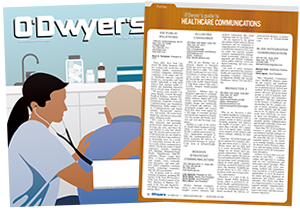 Jonathan Bloom Jonathan Bloom |
|
|
Well, plenty, and our society has been attempting to figure out the cannabis conundrum ever since. On one hand, numerous studies have taken Shen Nung’s early work several steps further and a growing number of medical professionals are taking cannabis seriously as a treatment to work in concert with pharmaceuticals. On the other hand, cannabis remains classified as a Schedule 1 substance by the U.S. Government — alongside heroin and cocaine — greatly limiting medicinal professionals from broader studies or mainstream prescription. At the same time, medicinal cannabis has been legal in California since 1996 and other states including Washington and Colorado have legalized both medicinal and recreational use.
While the Federal government effectively looks the other way and leaves cannabis legalization to the states, capitalism is stepping in to create a Green Rush via an influx of investment, R&D, and sales/distribution infrastructure reminiscent of the Dot-Com era. While all of this is happening, those wishing to market legitimate medicinal cannabis products that reflect Shen Nung’s original vision are forced to do so delicately.
All of this raises the question: If our government calls it “medical,” isn’t high time we started treating cannabis like medicine in our marketing efforts?
About a year ago, our agency became one of the first established firms in the United States to represent a legitimate medical cannabis provider. Constance Therapeutics’ science-based cannabis extracts have shown to be effective in the treatment of severe illnesses including cancer. We’ve represented pharma companies over our 30+-year history and has also worked with numerous product companies in consumer goods, technology, food, alcohol and other markets. We accepted Constance Therapeutics’ offer to represent the brand based on one condition: that communications activities would be undertaken as if it was a pharmaceutical company. In other words, treat the medicine like a medicine. It all sounds so simple but we had history working against us.
I’m not talking about the great work of Shen Nung. Nor am I referring to Irish doctor William O’Shaughnessy, who introduced cannabis to the world of Western medicine in the 1830s and used it to treat patients afflicted with muscle spasms and pain. Same for the 1944 The New York Academy of Medicine report that declared cannabis does not cause insanity, violence, addiction or lead to the use of so-called “heavy” drugs.
Rather, I’m referring to the historical histrionics that left a large bruise on cannabis’ public image, one that anybody marketing cannabis products must take into consideration or have no prayer of overcoming. Let’s begin with the racially tinged ties of the word “marihuana” — a Mexican Spanish substitute for cannabis that ultimately became “marijuana” — to Mexican immigrants. These recreational users arrived in the U.S. during the 1910 Mexican Revolution and were said to be violent as a result of cannabis use. Or how about the 1936 film Reefer Madness in which high school students use cannabis and run afoul of the law through violent and anti-social acts. That propaganda labeled marijuana/cannabis “a violent narcotic,” “an unspeakable scourge,” and “The Real Public Enemy Number One!”
Want a more current examples? How about Cheech and Chong and Fast Times at Ridgemont High which spawned the “stoner” image with associated phrases such as “baked,” “faded,” etc. Or, what about one of my favorite hip hop artists, Wiz Khalifa, who posed this question on his excellent song “Time”: “Who else you know smoke a half pound in seven days?” That song also includes the lyrics “getting high while I drive.” The image of Wiz smoking eight ounces of cannabis flower in seven days is exactly what makes it challenging for legitimate marketers to highlight legitimate products to people seeking medicinal benefits.
As communicators know, words are powerful. Words spoken by Wiz, Cheech or Spicoli have linked consumption with lazy, apathetic approaches to life. “Weed” conjures up one set of mental images. “Cannabis” relates to others. Even though they are simply different names for products that come from the same plant, the audiences are quite different as are the sensitivities to old-time jargon and related humor. While old habits are hard to break, it is essential as marketers that we avoid stoner jargon. It is also essential to align medicinal cannabis clients with strategic program elements highlighting benefits that can be validated while also making a positive contribution to the industry.
The program we developed for Constance Therapeutics aligned it with various issues such as standardized product development, the science of medical cannabis extract production and research on impact. The program’s focal point enabled Constance Therapeutics to become a key voice in the conversation surrounding opioid use in the National Football League. We conceived a first-of-its-kind pilot study of medicinal cannabis as an alternative to opiate painkillers. The pilot study kicked off in late September in conjunction with the Gridiron Cannabis Foundation and former NFL players.
Marketers must also regularly consult both FDA regulations as well as the laws of your state while planning a campaign. FDA regulations may require legal interpretations due to cannabis’ Schedule I classification. In general terms, the FDA takes a dim view of brands that make unverified product claims on health benefits and/or treatment outcomes.
From all indications, medical cannabis is here to stay. Understanding where your client/company fits in and focusing modern communications approaches on your business goals will go a long way towards treating cannabis like what it is: a medicinal product for specific applications.
* * *
Jonathan Bloom is Chief Executive Officer and Founding Partner at McGrath/Power Public Relations.



 Lo Isidro, senior director at Real Chemistry with more than a decade of strategic communications and PA experience, has joined Narrative Strategies.
Lo Isidro, senior director at Real Chemistry with more than a decade of strategic communications and PA experience, has joined Narrative Strategies. Nelson Fernandez, former North American chair of APCO Worldwide and managing director of Burson-Marsteller, has joined Volunteers in Medicine Berkshires as director of communications and PA.
Nelson Fernandez, former North American chair of APCO Worldwide and managing director of Burson-Marsteller, has joined Volunteers in Medicine Berkshires as director of communications and PA. Lilit Bargar, who was most recently an EVP in the healthcare practice at Weber Shandwick, comes on board at GCI Health as EVP, corporate practice lead.
Lilit Bargar, who was most recently an EVP in the healthcare practice at Weber Shandwick, comes on board at GCI Health as EVP, corporate practice lead.
 Five ways that successful thought leaders are made.
Five ways that successful thought leaders are made.


 Have a comment? Send it to
Have a comment? Send it to 
No comments have been submitted for this story yet.